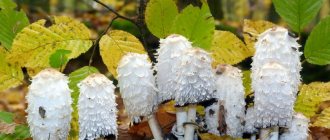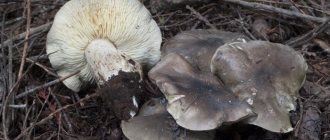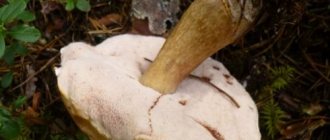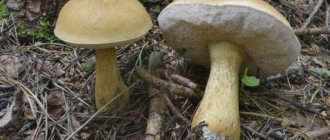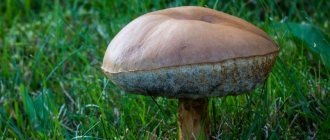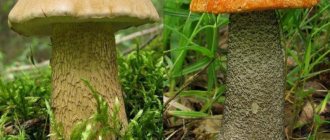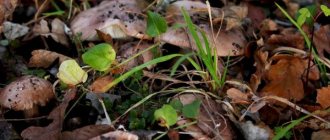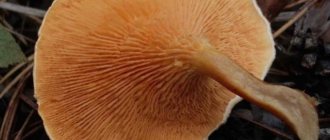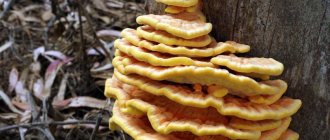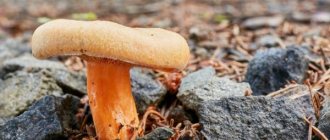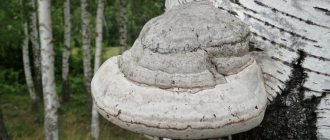White dung beetle (Coprinus comatus) is a rather controversial mushroom, since in different places it lives, attitudes towards this species vary. Now the species of white dung beetle is classified as a conditionally edible species of mushroom. While in Belarus and Russia many mushroom pickers quite often collect and eat them, most European countries consider it poisonous and unsuitable for consumption. However, Finland and the Czech Republic classify this mushroom as a gourmet dish.
Description of the mushroom
The dung beetle is white, shaggy, shaggy or scaly, also called the White Corpinus or Inky Porcini mushroom, which in Latin is Coprinus comatus. It belongs to the genus of dung beetles of the champignon family.
The cap is a dome up to 15 cm high and up to 10 cm in diameter. The shape is usually ovoid, elongated, then becomes narrow bell-shaped. The color is white, can be grayish or brownish, on the top of the head there is a rather wide brown tubercle. The entire surface of the cap is covered with scales, which are densely grown fibers.
The hymenophore, the lower part of the cap, consists of frequently spaced plates, wide and free. At first they are white, then acquire pinkish tints, and then, together with the flesh of the cap, turn into a black mass containing a large number of charcoal-colored spores.
The pulp does not change tone when cut. It has no taste or smell. Soft, white.
The stem grows up to 35 cm in height and only 2 cm in diameter. It is located in the center of the cap, has the shape of a cylinder, is white, silky, and empty inside. The base forms a thickening in the form of an onion. On the leg there is a membranous ring, very delicate and mobile. In young fruits it is white, then becomes black.
A little history
The Danish scientist Otto Frederik Müller was the first to talk about the white dung beetle, and in 1797 the Dutch mycologist Christian Heinrich Person transferred it to a new genus.
He significantly supplemented Linnaean taxonomy with his research, and also compiled the first scientific taxonomy of fungi, and worked on defining genera and species.
Cover soil
For calcium-loving dung beetles, it is recommended to set the pH value from 7.5 to 8. The soil should be sufficiently moist before application (check manually) and not dry out during cultivation. It is best to cover the soil surface again with damp paper, a jute bag or perforated film. At a temperature of about 20 ° C, after 10 days the mycelium will appear on the soil surface. Now it needs to be raked to its full depth using a wire brush or rake. After this, the crop cannot be covered, since the dung beetle requires fresh air to form a fruiting body. The cover soil should be sufficiently moist; for watering, use a watering can with small holes.
Time and place of fruiting
Ink white mushroom can be found on loose soils; it loves a large amount of organic fertilizers, and often grows in pastures, vegetable gardens, and parks. Quite common in the northern part of the temperate climate zone. Fruiting occurs in large groups from summer to autumn.
The largest number of these mushrooms can be found in fields and vegetable gardens, on lawns and gardens, as well as in garbage dumps, landfills and manure heaps, where it is not worth collecting, because it accumulates harmful substances in the body. There are isolated specimens along roads, and in rare cases in the forest.
Ripening, harvesting
Approximately 3-4 weeks after applying the cover soil, the first mushrooms appear. The best temperature for this is from 15 to 20 °C. With an interval of 10-14 days, the mushrooms grow in several waves. After the 7th wave, the yield, as a rule, drops so much that further cultivation does not pay off. No later than mid-November, open ground breeding stops. The used substrate can be used as fertilizer for berry bushes or fruit trees.
The dung beetle is collected by grasping the base of the stem and carefully twisting it out of the substrate. Small mushrooms with a smooth surface are stored in the refrigerator for 2-3 days longer than large ones. They are also better suited to drying and freezing. If you cook the mushrooms immediately after picking, you can allow them to grow larger. However, as soon as a pink-red coating appears on the plates, it is necessary to collect the grown fruiting bodies as quickly as possible. The dung beetle yield is usually 12-15% by weight of the substrate.
Growing at home and in the country
White dung beetle has shown itself to be excellent in artificial propagation, and it even grows as a weed in beds with champignons. It is not grown on an industrial scale due to its short shelf life.
At the same time, the mushroom is less demanding on the soil and is almost not susceptible to various diseases and pests. The harvest is always consistently abundant. For home use it is considered very good and quite suitable for growing on your own premises.
Dung beetles can only be grown in fairly cool climates. The southern regions will destroy the mycelium in too hot summers. The room will require good ventilation, since the dung beetle requires a lot of fresh air.
In any case, for growing on a personal plot you will need the most shaded and coolest place. For planting, you will need the same substrate as for champignons, especially if you add a little calcium carbonate to it. The thickness of the fertile layer must be at least 20 cm.
To calculate the exact dosage of mycelium, you need to carefully read the manufacturer's instructions. Depending on this, many factors will differ. Most often, one kilogram of spore-bearing substance is enough for 1 square meter. m. area:
- The powder or liquid is distributed over the prepared surface.
- Sprinkle the rest of the substrate on top, no more than 5 cm.
- Then you need to water and cover with burlap or perforated film.
The best period for planting will be May, but later is possible, only the soil temperature is important, which at the time of planting should be from 20 to 24 degrees. After a month, the substrate will be overgrown with mycelium.
The covering material is removed after the mycelium has formed. Now, for the fruits to ripen, a large amount of fresh air is required, and they will appear after 1.5 months. The best atmospheric temperature for them is up to 20 degrees.
Harvest waves are observed every two weeks, and after 7 waves they become very small, and the substrate can be used to fertilize the garden or shrubs.
Use of white dung beetle in traditional medicine
Due to its properties, white dung beetle has found use in folk medicine. For these purposes, mainly powders and extracts are used.
What to pay attention to
White dung beetle is a valuable food product that is often present on the table of mushroom lovers and connoisseurs as a component of many dishes. However, during treatment, its use should be carried out on an ongoing basis and in a certain quantity.
To get a positive effect, you should take into account the beneficial and harmful properties of white dung beetle when using it. Also, many people, especially older people, have several chronic diseases. Only a doctor, or better yet a herbalist, can take all these points into account and prescribe the correct treatment. The information given below is for informational purposes only.
Cardiovascular diseases
The benefits of white dung beetle have found application as a preventive measure for cardiovascular diseases. The substances in its composition cleanse blood vessels, help strengthen them, and have a beneficial effect on the functioning of the heart.
Gastrointestinal diseases
The medicinal properties of white dung beetle are recommended for use against sluggish digestion and constipation. It helps with hemorrhoids.
For diabetes
Due to its pronounced ability to significantly reduce blood sugar levels, treatment with white dung beetle gives a good effect in diabetes mellitus.
For the liver
Treat liver and gallbladder diseases with white dung beetle. Regular consumption of the mushroom restores liver cells and makes it healthier. Dung beetle is also useful for stagnation of bile and other diseases of the gallbladder.
For men
White dung beetle is recommended in traditional medicine for prostate adenoma.
Joint diseases
The beneficial and medicinal properties of white dung beetle are used to treat some joint diseases.
For the whole body
White dung beetle is also useful for healthy people. The mushroom is a source of antioxidants, helps cleanse the body, removing waste and toxins, and strengthens the immune system.
Evaluation of taste qualities, medicinal properties, benefits and possible harm
The mushroom is best consumed at a young age, before the plates begin to turn inky.
Thus, the dung beetle is edible no later than two days after it emerges from the ground. And processing should be carried out no later than 2 hours after harvesting.
Coloring of the plates occurs even due to freezing of the dung beetle, and therefore it should be boiled beforehand. This mushroom should not be mixed with other forest fruits; it is prepared separately from the rest.
Raw fruiting bodies are not suitable for consumption, although there are claims that they are safe.
For quite a long time in Russia, this fruit was considered a toadstool, was unpopular and did not end up in the baskets of mushroom pickers. In the Czech Republic and Finland, as well as in France, white dung beetle is considered a delicacy, highly valued and quite expensive.
Important! Mushrooms are not recommended for consumption by children, pregnant and lactating women, as well as those with diseases of the gastrointestinal tract, liver or kidneys, especially in the acute stage.
The white dung beetle has a relative that is widely known as a mushroom that helps in the treatment of alcoholism (Grey dung beetle). It contains coprine, which has helped scientists create synthetic analogues used to combat this disease. Therefore, the use of gray dung beetle is prohibited together with alcohol, otherwise severe intoxication occurs, which is accompanied by the following symptoms:
- severe pain in the abdominal area;
- nausea and vomiting;
- weakness;
- tachycardia;
- hot flashes in the head;
- decrease in pressure.
This leads to the development of a gag reflex to the taste of alcohol. The white dung beetle does not have such properties, since it does not contain coprine in the fruiting body.
Similar species
White dung beetle is a mushroom with such an unusual and bright appearance that only closely related species are its “doubles”.
- The dung beetle is gray.
It differs only in the color of the cap; its nutritional qualities are similar to the white dung beetle.
- The dung beetle is real.
It differs from white in color and in that its cap opens much wider. It is eaten in the same way as other dung beetles.
1- Gray dung beetle. 2- The dung beetle is real.
Cooking recipes
Preliminary preparation consists of clearing forest debris, washing and boiling the mushrooms for 15 minutes in salted water. The broth should then be drained.
Then you can cook white dung beetle: add it to soup, freeze or fry. White dung beetles make a wonderful pasta sauce or pizza topping.
Fried ink mushrooms are easy to prepare, you will need:
- boiled fruits – 300 g;
- onion – 100 g;
- salt, pepper to taste;
- butter – 20 g.
Cooking process:
- Heat a frying pan with a piece of butter.
- Add chopped onion and fry until half cooked.
- Add mushrooms and simmer covered for 15 minutes.
- The resulting water can be drained, add salt and pepper to taste, and after 2 minutes remove from heat.
You can serve with potatoes, pasta or buckwheat porridge. Good in combination with herbs and sour cream.
Interesting Facts
- The process of decomposition of the dung beetle cap occurs not under the influence of external factors, but due to the enzymatic reaction of the fungus itself, autolysis.
- It is not for nothing that the dung beetle is called the ink mushroom - it was previously used to make ink and ink.
- The reaction to the combination of alcohol with coprine contained in dung beetle has long been used to treat alcoholism. Pharmaceuticals also did not stand aside - drugs based on coprine are produced that can release it into the blood for a long time, which makes drinking alcohol impossible.
Video gallery
Video reviews
A selection of videos with descriptions and recipes for preparing mushrooms
Gribolov, Sadko Litsky, about Mushrooms and Plants in His Own Words
Precautionary measures.
The white dung beetle has no dangerous counterparts with which it could be confused, but this is not a reason for carelessness. Fans of white dung beetle or beginners who want to try this mushroom need to be extremely careful and follow several safety rules so as not to suffer from consuming it. Let's look at the basic safety rules when collecting dung beetles.
- Under no circumstances should you collect mushrooms near landfills, where they grow most. The fact is that the dung mushroom prefers such places, since the soil in such areas contains the maximum amount of nutrients for its growth. But, these are the most favorable conditions not only for the growth of the fungus, but also for the accumulation of all toxic substances. Therefore, a mushroom that grows near a landfill, although considered edible, can be deadly due to the harmful substances accumulated during the growth period.
- A distinctive feature of all dung beetles is the ability to autolyze. In simple terms, with age, the dung beetle produces special, caustic substances that trigger the process of self-digestion, which is why the mushroom turns into a black, resinous, inky mass. But the beginning of autolysis indicates that the mushroom has already become unsuitable for use for culinary purposes. Of course, to date, not a single fatal case of consuming mushrooms that have begun the autolysis process has been recorded, but it is still not recommended to take risks. That is, you can collect only those mushrooms whose plates have retained their white color and have not begun to darken. As a rule, the plates of the fungus begin to turn blue on the third day after the dung beetle appears above the soil surface.
- Another important recommendation is that before eating white dung beetles, you need to boil them thoroughly. Since the mushroom is classified as conditionally edible, the requirements for heat treatment are the same as for other species of this class. It is recommended to pre-soak the mushrooms in water.
Chemical composition
- 90% of all pulp is water;
- vitamins B, C, E, D1, D2, K1, thiamine, riboflavin, choline, betaine, tocopherol, tocotrienol;
- minerals: calcium, magnesium, potassium, phosphorus, sodium, manganese, zinc, selenium, iron, copper;
- amino acids (17 pcs, including 8 essential);
- coprine is a substance incompatible with alcohol (severe poisoning occurs);
- glucose, fructose;
- tyrosinase;
- nicotinic, pantothenic, folic acids;
- saturated and polyunsaturated fatty acids;
- tyrosine and histidine - only in wild mushrooms, they are absent in artificially grown ones;
- trypsin and maltase;
- polioses.
